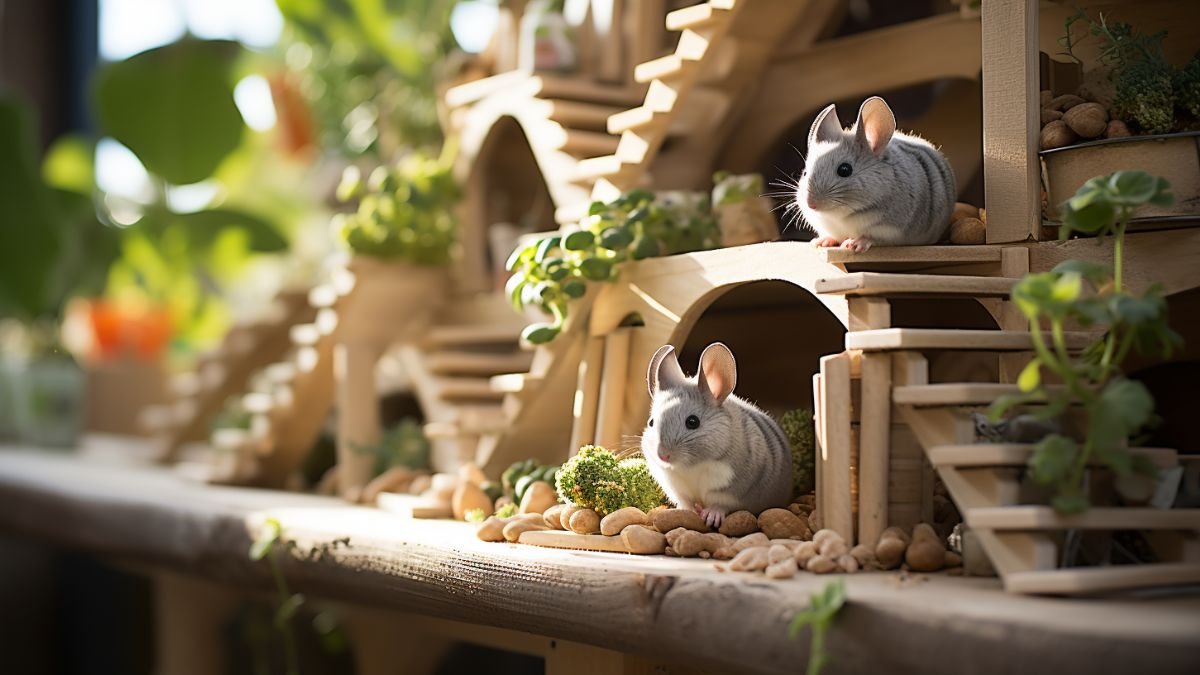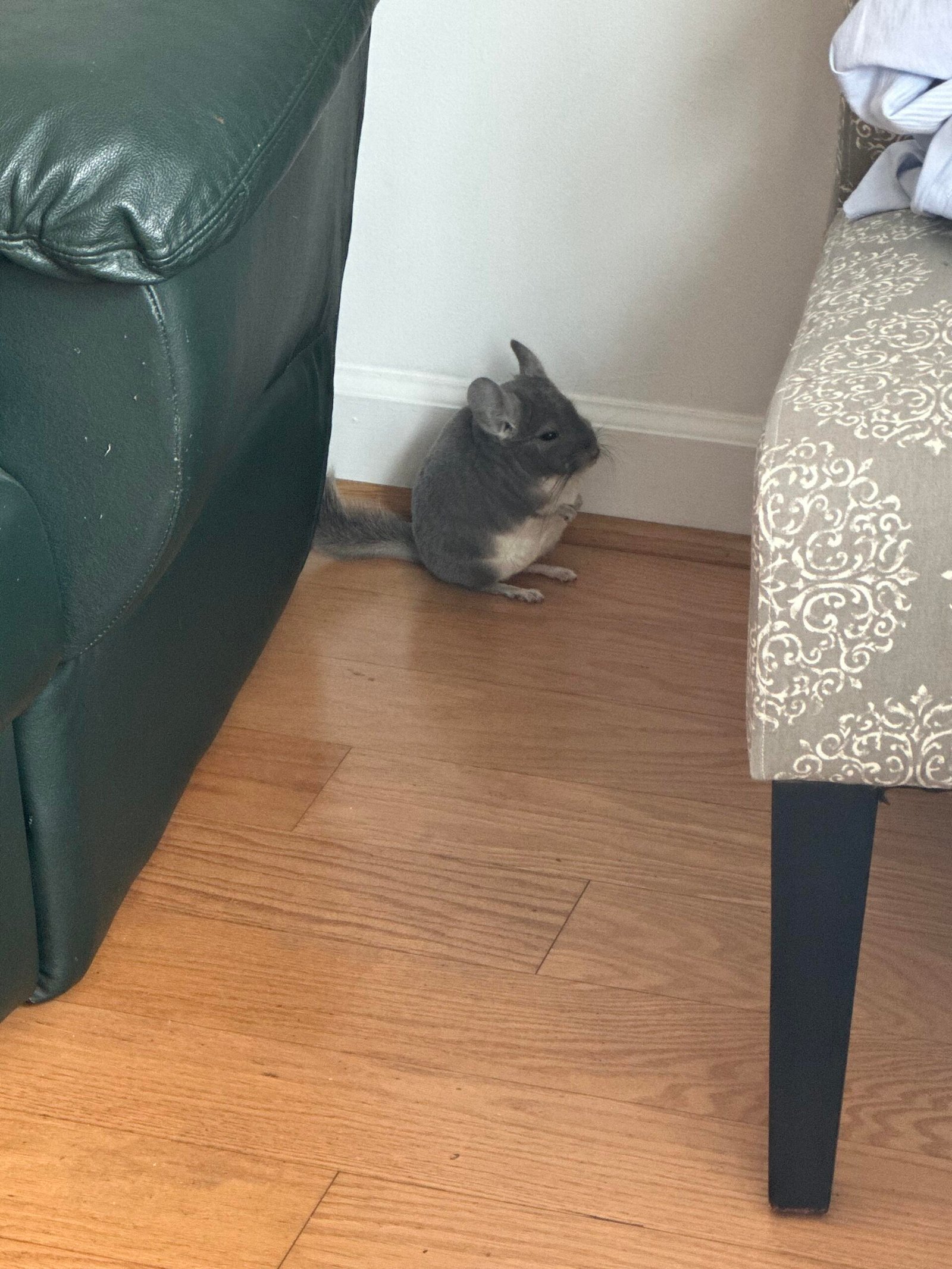
Shyness in chinchillas is natural — these small, sensitive animals are prey species by instinct. Loud noises, new scents, or sudden movement can make them freeze or hide for hours. But with patience, the right environment, and a little empathy, even the most timid chinchilla can grow into a confident, affectionate pet.
This step-by-step guide will show you how to gain your chinchilla’s trust, understand its signals, and create a calm, social bond built on respect — not force.
Understanding Why Some Chinchillas Are Shy
Before training, it’s important to understand where shyness comes from. Common causes include:
- Lack of early socialization (raised in isolation or minimal handling)
- Sudden environmental changes (new home, cage, or routine)
- Loud noises or stress triggers (TVs, kids, dogs, vacuum cleaners)
- Past trauma or rough handling
- Personality differences — just like people, some chinchillas are naturally introverted
Every chinchilla is unique, so the path to trust varies. Your goal is to create a routine that teaches your pet that you’re safe, predictable, and gentle.
Step 1: Create a Calm and Safe Environment
Shy chinchillas need stability before they can interact comfortably.
Cage Placement
- Keep the cage in a quiet, dimly lit corner away from TVs, windows, and traffic.
- Avoid constant movement or loud background noise.
- Ensure room temperature stays between 60–70°F with low humidity.
See your article on habitat for chinchillas for detailed setup guidance.
Hideouts and Security
Provide at least two hiding spots: one enclosed house and one open shelf. Try:
Having safe zones gives your chinchilla control over its environment — the foundation of trust.
Step 2: Establish Routine and Predictability
Routine is critical. Feed, clean, and interact at the same times daily so your chinchilla learns to expect gentle contact.
What to Do
- Speak softly when approaching the cage.
- Move slowly — sudden motions trigger defensive behavior.
- Keep playtime and handling consistent (evening is best, since they’re nocturnal).
Chinchillas recognize patterns quickly; once they know you won’t startle them, curiosity replaces fear.
Step 3: Let Them Come to You
Never chase or grab a shy chinchilla. Instead, let them approach you on their terms.
How to Begin
- Sit quietly by the cage for 10–15 minutes daily.
- Speak in a calm tone — say their name softly.
- Offer your hand palm-up just outside the cage bars.
After a few days, place a small treat on your hand — such as Oxbow Simple Rewards Timothy Treats.
Don’t move if they sniff or nibble; patience earns trust faster than anything else.
Step 4: Introduce Gentle Hand Feeding
Once your chinchilla feels comfortable taking treats from your hand, begin slow hand-feeding through the cage bars, then from inside the open door.
Tips
- Keep hand movements minimal and predictable.
- Avoid eye-level staring — it can feel like a predator gaze.
- Stop if they flatten their ears or chatter teeth (stress signals).
Gradually, they’ll associate your hand with safety and rewards.
Step 5: Offer Free Exploration Time
After two or three weeks of quiet interaction, it’s time to let your chinchilla explore outside the cage in a controlled space.
Prepare a chin-proofed area (read how to chin-proof wires and furniture). Sit on the floor, stay still, and let them hop around.
They’ll likely climb onto you out of curiosity. Keep your hands still — let them initiate contact first.
Step 6: Gradual Handling
Handling should always happen after a bond forms. Never scoop from above — it mimics predatory grabbing.
Proper Handling Technique
- Gently place one hand under the chest and the other supporting the hindquarters.
- Keep them close to your body to prevent wriggling or falls.
- Limit sessions to a few minutes at first.
Use a calm voice throughout, and reward them after each session.
Step 7: Introduce Play and Enrichment
Play helps shy chinchillas relax and express natural behaviors. Offer varied textures and chewables for exploration.
Recommended Enrichment
- Chinchilla Foraging Toys for mental stimulation
- Chinchilla Hanging Toys for activity variety
- Apple Wood Sticks for Chinchillas for safe chewing
- Prevue Pet Playpen for supervised playtime
Rotate toys weekly to prevent boredom.
For behavioral science insights, see NIH Study on Rodent Socialization Patterns.
Step 8: Use Positive Reinforcement
Reward curiosity, calmness, and gentle interactions — not boldness alone.
Use tiny treats or favorite hay cubes during bonding time. If they flinch or hide, pause and return later; forcing interaction resets trust.
Learn about safe rewards in healthy chinchilla treats and homemade chinchilla treats safely.
Top 5 Products for Bonding and Socialization
| Rank | Product | Description | Amazon Link |
|---|---|---|---|
| 1 | Oxbow Simple Rewards Timothy Treats | Ideal low-sugar reward to build trust during training. | View on Amazon |
| 2 | Prevue Pet Small Animal Playpen | Safe enclosed area for out-of-cage social sessions. | View on Amazon |
| 3 | Apple Wood Sticks for Chinchillas | Natural chew option that relieves stress and prevents bar biting. | View on Amazon |
| 4 | Chinchilla Foraging Ball | Encourages curiosity and play during bonding time. | View on Amazon |
| 5 | Kaytee Lava Ledge Chew Toy | Provides both exercise and safe chewing activity. | View on Amazon |
Common Mistakes to Avoid
- Rushing the process. Trust takes weeks or even months.
- Handling before comfort. Let them come to you first.
- Using loud voices or sudden lights. These trigger fear instantly.
- Ignoring body language. Flattened ears = stress; relaxed whiskers = calm.
- Housing near predators. Keep away from cats, dogs, and birds of prey.
When to Seek Professional Help
If your chinchilla remains fearful after several months, or reacts aggressively (biting, lunging, screaming), consult an exotic-pet behavior specialist. Chronic fear may stem from past trauma or neurological factors.
Vet resources: VCA Animal Hospitals – Small Mammal Behavior.
FAQs about Socializing a Shy Chinchilla
1. How long does it take to tame a shy chinchilla?
Anywhere from a few weeks to several months, depending on temperament and past handling.
2. Is it okay to keep a shy chinchilla alone?
Yes — but provide daily interaction. Loneliness can worsen anxiety. See how to keep a single chinchilla from getting lonely for tips.
3. My chinchilla runs from my hand — what should I do?
Stay patient. Keep your hand still; let them approach voluntarily.
4. Will treats make them more social?
Treats help, but use sparingly. Too many lead to dependence or digestive upset.
5. Should I adopt a second chinchilla for companionship?
Sometimes, but only if your current chinchilla is healthy and stable. Always introduce slowly and under supervision.
Key Takeaways
- Move slowly and create a calm, predictable environment.
- Let your chinchilla approach first; never force contact.
- Use safe, low-sugar treats for positive reinforcement.
- Offer playtime, foraging, and chew toys for enrichment.
- Be patient — consistent kindness builds trust faster than handling.
With steady effort, your shy chinchilla will begin to see you not as a threat but as a trusted companion — and eventually, you’ll earn that heart-melting moment when they rest in your hands by choice.
CTA: Build Trust and Confidence with Your Chinchilla
Start socializing today with these essentials:
- Oxbow Simple Rewards Timothy Treats – gentle positive-reinforcement snacks.
- Prevue Pet Playpen – for safe exploration.
- Apple Wood Sticks – chew stress away.
- Chinchilla Foraging Ball – boost curiosity and play.
- Kaytee Lava Ledge – climbing fun for confidence building.
Author:
Written by Chinchilla Haven
Trusted, research-based guides for healthier, happier chinchillas.





